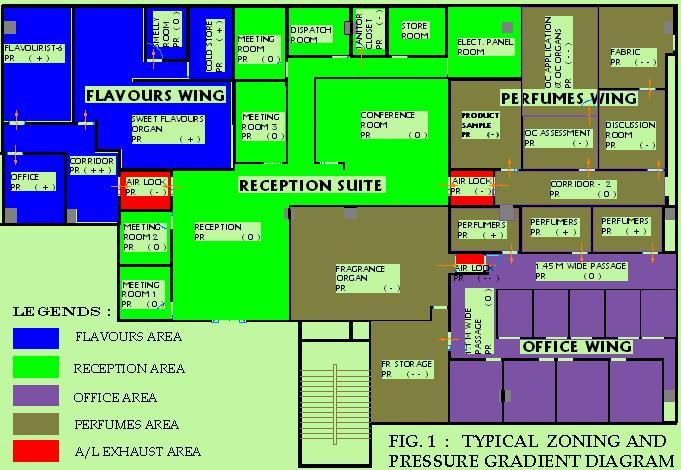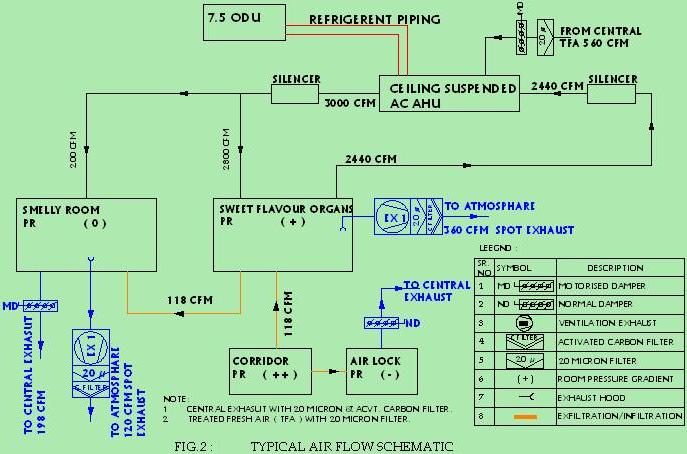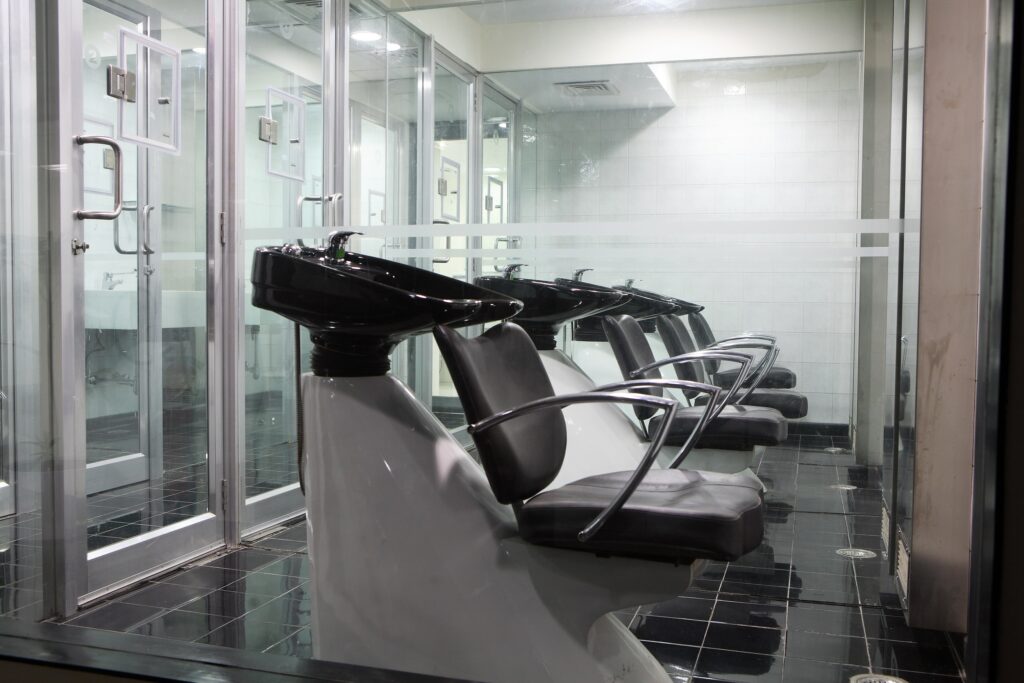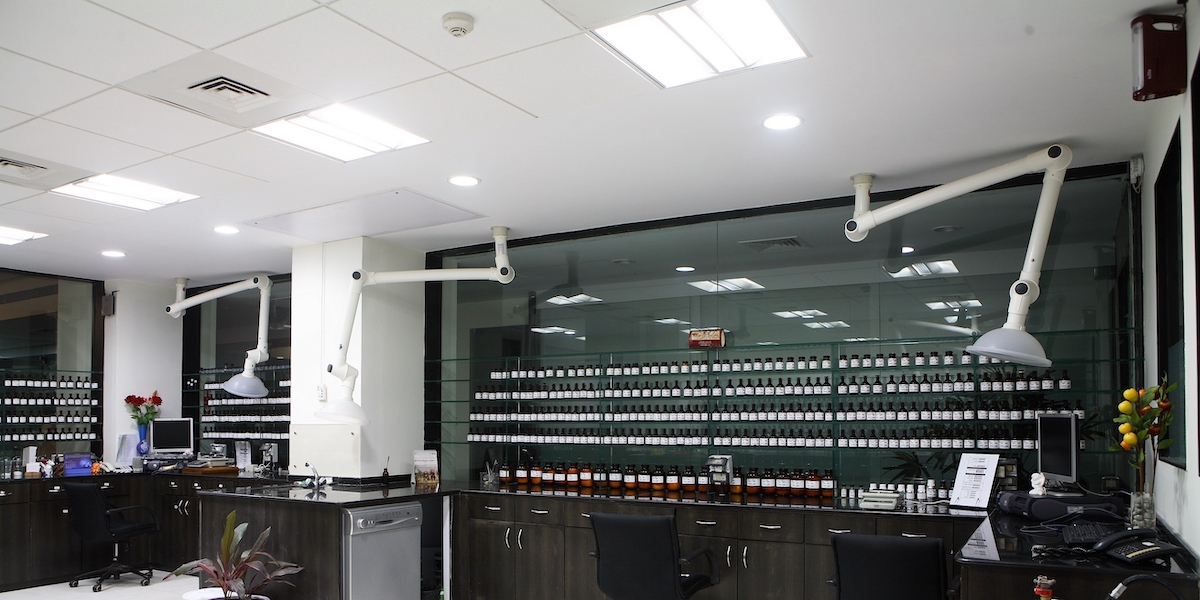Smells are chemicals that get carried by air. The olfactory system detects volatile organic compounds in the chemicals present in air. The chemicals themselves, which activate the olfactory system, generally at very low concentrations, are called odors Smells are sensed by olfactory sensory neurons in the olfactory epithelium in the nasal cavity. Humans have about 10 cm² of the olfactory epithelium, whereas some dogs have 170 cm2. A dog’s olfactory epithelium is also considerably more densely innervated, with a hundred times more receptors per square centimeter!
The foregoing is to show what it takes to have a sharp sense of smell. Perfumists have a very heightened sense of smell. They can discern and catalogue smells. Their labs should not have build-up of smells and mixing of various smells in order to ensure that they can go about their work efficiently.
Essential Features for Smell Control
In order to prevent smells from building up, air in the room will need to be replaced with fresh air. In order to prevent smells mixing between rooms, the air of the rooms should not mix. Further, in order to contain smells in rooms when doors are opened, it is essential that room pressures are lower than the adjoining rooms & these adjoining rooms are ‘smell neutral’ i.e. they are not smell laden.
This brings us to the essential features to be incorporated in air-conditioning systems for handling smells:
- To prevent buildup of smell in the conditioned area, smell dilution needs to be done using make-up fresh air. Harsher smells or more quantity of smell will need more make-up air for dilution.
- Perfume or essences need to be dispensed at locations under exhaust hoods to minimize the spread of the smells in the room.
- Zones dealing with different smells will need to have separate air-conditioning systems, so that smells of various zones do not mix.
- The common corridor opening into the various zones needs to be at a higher pressure so that when room doors open, corridor air gets into the room & not vice-versa. The common corridor is ‘smell neutral’
- Though it would be useful to have air-locks separating the rooms from the corridors, in most cases it is impractical, considering the way lab personnel move around with bottles and vials in their hands. In most cases they manipulate the doors with their legs, as their hands are not free!
- The smelliest rooms need to be at most negative pressures to ensure that the smells do not get into other rooms.
Room Construction
The materials used for construction of rooms should be such that they do not absorb smells. Otherwise, the absorbed smells will be given out all the time and the room will turn out to be smelly.
Typically, glass and metals are used in abundance for partitions. False ceilings are of metallic construction instead of, say, gypsum board or compressed mineral fibres.
Carpets are not to be used as the absorb smell.
The doors are gasketed so that there is very little gap between the door and doorframe. This ensures that very little infiltration or ex-filtration of air takes place due to pressure gradients between rooms.
All partitions go till the main ceiling and all apertures for cables, plumbing and ducts are carefully sealed. The gaps between diffusers & lights and false ceiling too are carefully sealed to prevent leakage of smell from one zone to another.
Fresh Air and Exhaust Air Manifolds
The locations of fresh air intake and exhaust air manifold is critical. It is imperative that these are physically as far apart as possible. Prevalent wind directions will need to be taken into consideration to ensure that there is no possibility of short cycling of exhaust air into the fresh air intake.
Treatment of Exhaust Air
In order to ensure that there is no ‘smell pollution’ into the neighborhood, exhaust air systems need to incorporate activated carbon filters.
Specific Details of a Project
The particular project executed recently for a multinational company involved air-conditioning a laboratory for perfumes and essences.
The laboratory was located in Mumbai in one of the commercial building having other offices as neighbours.
In all there were sixteen air-conditioning systems for areas admeasuring ______ sqft. Needless to say, no floor space was allocated for air-handling units.
Since perfumes (these involve light smells) and flavours (these involve heavy smells) were involved, the laboratory, occupying the whole floor was divided into two wings. One wing for perfumes, the other for flavours & the in between zone for reception, meeting rooms and conference room. The office area was part of the perfume wing as this involved light smells.
Entry into the two wings was through airlocks maintained at highly negative pressure. This was to provide a barrier for smells of the zones from getting into the reception zone.

The salient features of the air-conditioning systems were as follows:
- Ducted Supply & Ducted Return Having a false ceiling return was avoided as the possibility of air mixing above a false ceiling between zones could not be ruled out.
- Ceiling Suspended Air-handling Units In view of the ducted supply & return and because pressure gradient was a criterion, all systems had air-handling units. Paucity of space resulted in these units being ceiling suspended.
- Air-cooled Condensing Units The laboratory did not have permission for installing a chiller package. As a result, each air-handling unit had its condensing unit(s).
- Sound Attenuators for Supply & Returns Air Since the air-handling units were very near the respective conditioned areas, sound was a critical issue. The Client wanted all areas to be less than 50dB. All air-handling units had silencers for the main supply & return air duct.
- Re-circulatory Air Systems Ideally, considering smell dilution issues, a once thru’ system would have been ideal. This could have been viable when used along with energy recovery wheels. However, considering the space available above the false ceiling, this was not found to be feasible.
In view of the fact that we could have only re-circulatory systems, the Client referred to their in-house codes and came up with the following table of make-up fresh air requirement for dilution ventilation:
Table1: Typical Makeup Air Requirements for Dilution Ventilation
| Srl No | Area Designation | Fresh Air Make-up Air Changes per hour |
| 1 | Flavourist | 6 |
| 2 | Smelly Room | 8 |
| 3 | Sweet Flavours Organ | 4 |
| 4 | Product Organ | 4 |
| 5 | Product Sample | 6 |
| 6 | OC Application & OC Organ | 1 |
| 6 | Perfumers | 20 (no re-circulation) |
| 6 | Fragrance Organ | 3 |
| 6 | FR Storage | 1 |
Central Fresh Air & Exhaust Air Systems Each of the two wings have a central Fresh Air & Exhaust System. This system has two-fold function viz. providing dilution ventilation and providing pressure gradient.
One of the shortcomings of a common central system is that when the systems are switched off, the connected ducts passage for mixing of air, and thus smell.
To obviate this possibility, all fresh air and exhaust air connections to respective systems were provided with motorized dampers, which shut close when the systems are switched off.

- Air-conditioning for Special Rooms There were two sets of room that needed special consideration:
Perfumists Room These are the most critical rooms where the perfumists grade the products. These were provided with once- thru’ air-conditioning system. Another important detail is that these rooms are kept at highest pressure with respect to surroundings to ensure that no outside smells come in.
Shampoo Saloons Here, in a suite of eight cubicles, shampoo is applied on the hair of mannequins and the perfumist checks the smell by opening a hatch in the common corridor. After the check, the rooms have to be completely purged of the smell. This is achieved by having once-thru’ system, with corridor at higher pressure than the saloons & the exhaust points located at low level to facilitate complete purge of air after the test.

The photograph above shows a view of an array of saloons separated by partitions. Note the abundance of glass used, as this does not absorb smells. Supply air terminal is on false ceiling and the exhaust air is at a low level.
In Conclusion
Air-conditioning a perfume or essences laboratory essentially involves smell dilution using fresh air make-up, smell containment using zoning, pressure gradient and isolation of zones. Fresh air quantity required is the starting point of air-conditioning system design. This data is not available in ready reckoner handbooks. The manufacturing set-up from its research database provides this critical data.
Use of construction materials, which do not absorb smell, is the other important thing. A close eye on the construction details to ensure that there are no unwarranted gaps in false ceiling and partitions in passage of ducts, pipes and cables will ensure success of the air-conditioning system


